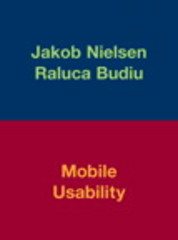Question
Show that, for any Turing-recognizable L, there is an unrestricted grammar that generates L. (Hint: We showed in class how to represent the configuration of
Show that, for any Turing-recognizable L, there is an unrestricted grammar that generates L. (Hint: We showed in class how to represent the configuration of a Turing machine as a string. At each step, the configuration of the machine changes. Think about how the string representing the configuration changes correspondingly, and represent this using grammar
Sol35:
Let M be a Turing machine that recognizes language L. We can construct an unrestricted grammar G that generates L as follows:
- Let Q be the set of states of M, and let S be the tape alphabet of M (including the blank symbol). We will use the symbols {q0, q1, ..., qk} to represent the states of M, and the symbols {a1, a2, ..., an} to represent the tape alphabet.
- We can represent the configuration of M at any given time as a string of the form "qiajv", where qi is the current state of M, aj is the symbol on the tape under the tape head, and v is the portion of the tape to the right of the tape head.
- We can then represent the computation of M on any given input w as a sequence of configurations, C1, C2, ..., Cn, where C1 is the initial configuration of M on input w, and each Ci is obtained from Ci-1 by applying the transition function of M.
- We can now construct a set of production rules for G that generate all strings of the form "qiajv" that represent valid configurations of M. Specifically, for each transition function d(qi, aj) = (qj, ak, L/R), we add the following production rule to G:
qi a j v ? a k q j v if L v a j q i ? v q j a k if R
These rules essentially represent the movement of the tape head to the left or right, along with the change in state and symbol on the tape.
- Finally, we add two additional production rules to G: one that generates the initial configuration of M on input w, and one that generates the accept configuration of M (i.e., the configuration in which M enters an accept state). These production rules can be constructed using the symbols and rules from steps 1-4.
With these production rules, G can generate all strings of the form "qiajv" that represent valid configurations of M on input w, and therefore, can generate all strings in L. Thus, G is an unrestricted grammar that generates L.
Step by Step Solution
There are 3 Steps involved in it
Step: 1

Get Instant Access to Expert-Tailored Solutions
See step-by-step solutions with expert insights and AI powered tools for academic success
Step: 2

Step: 3

Ace Your Homework with AI
Get the answers you need in no time with our AI-driven, step-by-step assistance
Get Started


